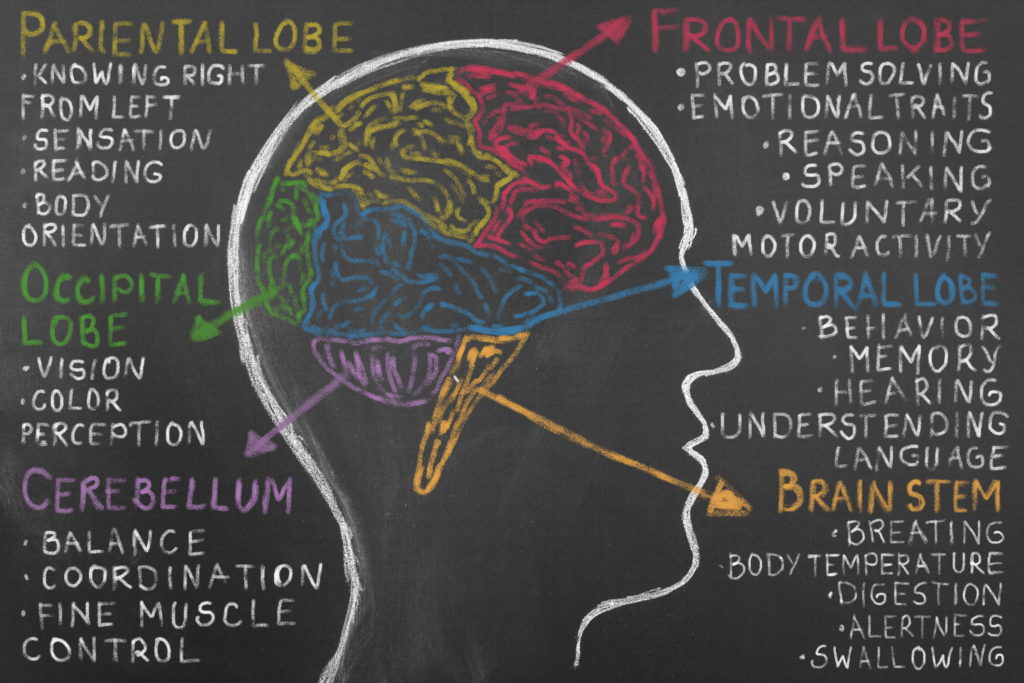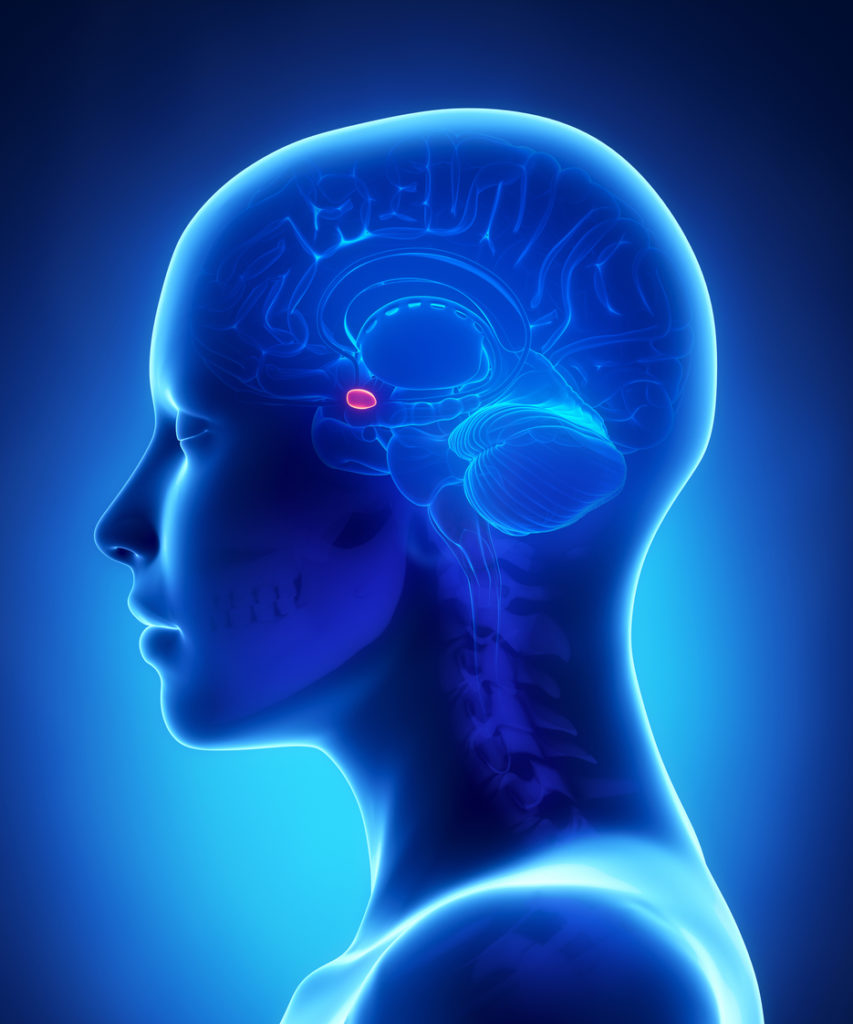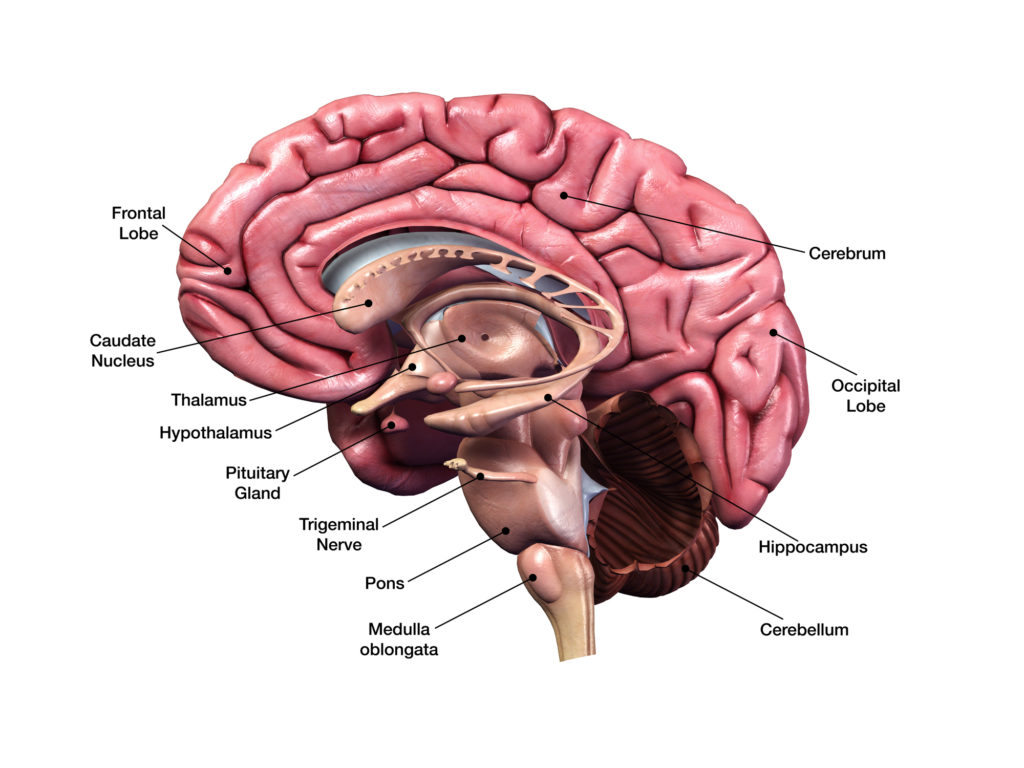As Ben Franklin said, “Anger is never without a reason, but seldom a good one.”
“Anyone can become angry – that is easy, but to be angry with the right person at the right time, and for the right purpose and in the right way that is not within everyone’s power and that is not easy.” Aristotle
Anger is one of the less noble of human emotions. We tend to beat ourselves up when we get angry. After the emotion dies down, we feel a little foolish for losing control.
The Brain

Frontal Lobe
The frontal lobes are involved in motor function, problem solving, spontaneity, memory, language, initiation, judgment, impulse control, and social and sexual behavior.
Parietal Lobe
Involves sensation and perception and it is concerned with integrating sensory input, primarily with the visual system.
Functions integrate sensory information to form a single perception (cognition). Another function of the parietal lobe is to construct a spatial coordinated system to represent the world around us. Individuals with damage to the parietal lobes often show striking deficits, such as abnormalities in body image and spatial relations.
The seat of the emotions

The Amygdala is an almond-shaped neuro-structure involved in Arousal producing and responding to nonverbal signs of anger, avoidance, defensiveness, and fear. It controls autonomic responses associated with:
- Fear
- Emotional Responses
- Hormonal Secretions
Your amygdala is your brain’s alarm system. Stimulate one region and you feel fear and panic making you want to flee from danger. Stimulate another and you get a burst of rage that makes you ready to fight. Fight and flight reaction are not always helpful in the modern world.
Your amygdala is responsible for generating negative emotions such as sadness, anger, fear and disgust. Work on non-emotional mental tasks inhibits the amygdala, which is why keeping yourself busy can cheer you up when you’re feeling down.
Memory and the Hippocampus

The hippocampus files away memories. It connects them with other related memories and gives the memories meaning. In other words, the hippocampus might be connecting the memory of your first day at school with information about the physical surroundings, the smells, and the sounds of that event. The hippocampus is critical for the formation of new autobiographical and fact memories. It may function as a memory “gateway” through which new memories must pass before entering permanent storage in the brain. Experiences are destined for your long term memory and stored in your hippocampus for a few years. During this time, experiences are relayed again and again into your brain’s cortex. Eventually these memories become permanently etched on to your cortex as long term memories.
Not feeling miserable is not enough to make you completely happy. You also need to feel a sense of purpose and meaning. This feeling requires activity in the front part of your frontal lobe. People with depression have a very little activity in this area of the brain.
We cannot choose whether or not we can get angry. All we can do is choose what to do with that anger. At the subconscious level, you will pick up cues and the core of your brain and the brain stem work together with the amygdala ( and the Hippocampus) in the limbic system, to determine if anger is the right response. Remember, this is not the highly refined neo-cortical part of your brain. The decision to become angry is not a delicate, deliberate and rational decision. The decision to get angry is throwing an emergency switch. Its purpose is to get you ready for a fight, literally. It happens in a few milliseconds.
The reptilian brain doesn’t believe there’s time for a debate about appropriate response, so there’s no rationalization of the situation at this point. What the amygdala does is an instantaneous shuffling through past experience to see if we’ve encountered anything similar in the past. It’s like a flash card deck of emotionally charged memories. And if we find a match, even a rudimentary one, it’s good enough for the amygdala. We instantly use that as our plan of action. And the rule of thumb is, the amygdala overreacts. Survival is the objective and not appropriate social interaction, so it calls in the big guns.
Basically, our bodies operate on the premise of “shoot first, ask questions later”. This priming the body for fight or flight happens literally in the blink of an eye. The alarm has been sounded and anger has been unleashed. For right now, at least, the reptile in us is in full control.
The speed of response of the amygdala is a two way street. It’s quick to be activated, but it’s also quick to shut down. The purpose of it is to get us prepared for a single burst of physical activity. Once it does its job, it moves on to the next thing. The information has been passed to the prefrontal lobe for further processing and the amygdala settles down to wait for the next threat. Total time elapsed? A few seconds.
Anger is a behavior
An anger problem is any behavior caused by anger that hurts you or someone else. Anger problems affect men and women of all ages, and from all walks of life. Anger problems come in many forms:
- Some people become indecisive or inactive when they feel their own or another person’s anger. (Passive)
- Some people act out anger feelings by attacking, or trying to control. (Aggressive)
- Some people use addictions to avoid their feelings. (Dependant-Addicted)
- Some people become introverted and depressed. (Depressive)
- Some people use their anger to manipulate or manage others. (Passive-Aggressive)
All anger problems are a form of control. When anger is “reacted” to, the anger is in control.
Anger is a message. Anger tells you that you are hurt and you don’t want to be hurt. Anger is a valid, healthy emotion. Anger is an emotion that can help set limits and boundaries in relationships. Anger is a tool to help identify needs and wants. Anger is powerful and needs to be used with respect.

When you know how to respond to your anger positively, you can tap into an unlimited source of personal power. This personal power can in turn enable you to speak for yourself and to learn to manage the fear of shame or criticism. Anger Alternatives can show you how to work towards your wants without rage, violence, aggression, or controlling behaviors.
Emotions, Stress, and Health
Emotions often have their roots in the way we appraise our environment and our reactions to it. People often come to appraise things as threats to their survival, when in fact things are not threats. The flight-flight response is activated. People also see large portions of the environment such as jobs, & neighborhoods as threats. (Page-237)
Frustration has long been regarded as a major cause of aggression. Frustration can be viewed as having its roots in the need to control or the need to be in control. An important feature of frustration is that it becomes very intense before it actually triggers an aggressive act. This suggests that a threshold is exceeded before the aggression occurs.
Stress has to do with adapting to a threat or adapting to a challenge. When people view an event as a threat, they experience distress. When people over interpret a stressor as a threat, it can effect their health. Stress is a sustained fight or flight response.
The Four Agreements
Agreement 1
Be impeccable with your words – Speak with integrity. Say only what you mean. Avoid using your words to speak against yourself or to gossip about others. Use the power of your words in the direction of truth and love.
Agreement 2
Don’t take anything personally – Nothing others do is because of you. What others say and do is a projection of their own reality, and their own dreams. When you are immune to the opinions and actions of others, you won’t become the victim of needless suffering.
Agreement 3
Don’t make assumptions – Find the courage to ask questions and to express what you really want. Communicate with others and yourself as clearly as you can in order to avoid misunderstandings, sadness and drama. With just this one agreement, you can completely transform your life.
Agreement 4
Always do your best – Your best is going to change from moment to moment. It will be different when you are healthy as opposed to sick. In all circumstances, simply recognize that you have done your best and you will avoid self-judgment, self-abuse and regret.
Resources
Brizendine, L., (2010). The Male Brain. Crown Publishing. N.Y.
Comer, R. J. (2011). Fundamentals of Abnormal Psychology, Sixth Edition. New York. Worth Publishers
Carlson, N. (2001). Physiology of Behavior (8th Ed.). Boston: Allyn and Bacon.
Goldstein, B. (2008). Cognitive Psychology, 3rd edition. United States. Wadsworth
Mayo Clinic Staff. (2011). Self-esteem: 4 steps to feel better about yourself. Mayo Clinic Health Solutions/MayoClinic.com
Werbach, M. R. (1999) Nutritional Influences on Mental Illness. (2ed) Firstline Press.

